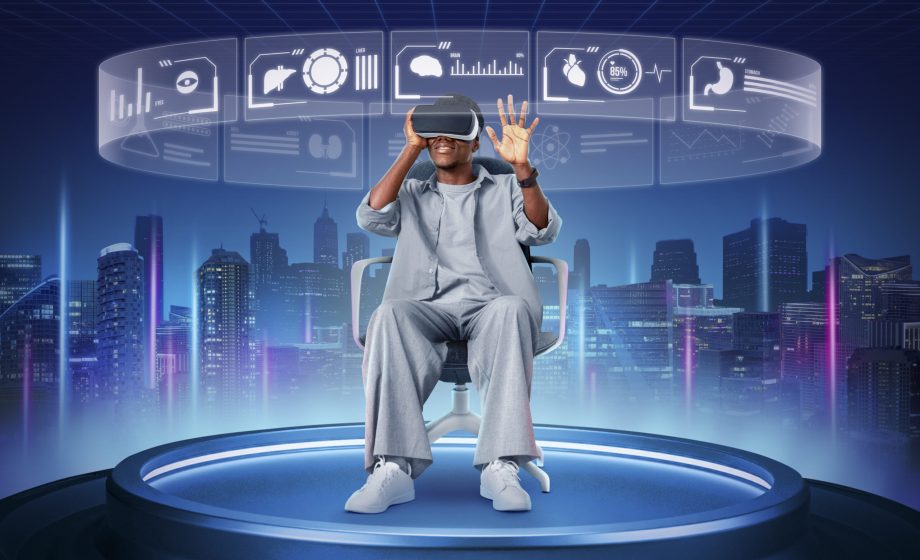Metaverse is becoming more popular as each day passes. The technology once designed for a small group is now shifting to broader use for the everyday home, work, and play.
While it may seem like a far-off reality, Metaverse is closer than we think. In his year-in-review post termed Gates Notes, Bill Gates predicts that “within the next 2 or 3 years, most virtual meetings will move from 2D camera image grids to the Metaverse, a 3D space with digital avatars.”
How true is this Gate’s assertion? Can Metaverse really replace Zoom?
Bill Gates has described how “you will eventually use your avatar to meet with people in a virtual space that replicates the feeling of being in an actual room with them, and that both Facebook and Microsoft recently unveiled their visions for this, which gave most people their first view of what it will look like.”
And when declaring Facebook’s rebrand to Meta, Mark explained the Metaverse like this; “We believe the Metaverse would be the successor to the mobile internet, we’ll be able to feel present like we’re right there with people no matter how far apart we are.”
Zuckerberg continued, “I think remote work is here to stay. So, we’re going to need better tools to work together. Imagine if you could be at the office without the commute. It would still have that sense of presence, shared physical space, and those chance interactions that make your day. All accessible from anywhere.”
Over the past few years, Meta and other big techs have designed several technologies to replace Zoom. Despite the innovations and advancements, it seems that Metaverse won’t replace Zoom anytime soon.
What are the efforts and technologies designed to work and probably replace Zoom?
Meta, the Facebook parent company, launched its Horizon Workrooms in beta. The platform is a virtual reality space designed for teams or people to “connect, collaborate and develop ideas, together, even if they’re across the world.”
Secondly, Microsoft has been rolling out Mesh for Teams which enables presence and shared experiences from anywhere with any device via mixed reality applications.
The tool promises to “connect with new depth and dimension and engage with eye contact, facial expressions, and gestures allowing personalities to shine as technology fades away.”
Cisco launched Webex Hologram. The platform claimed it to be “the richest collaboration experience yet. It’s a “real-time, photorealistic holographic interaction that goes beyond video conferencing for a truly immersive experience.”
Google’s Project Starline is also designed to “combine advances in hardware and software to enable friends, families, and coworkers to feel together, even when they’re countries or cities apart.”
Deloitte has equally announced its Unlimited Reality offering. This offering is an “experience and impact offering for virtual worlds.” Essentially, it’s a set of offerings that include a studio and innovation space to help educate, inspire, accelerate, and execute on client goals for the Metaverse.”
It’s important to add that Facebook and Meta designed neat trick spatial-audio technology to make its staff gain a foothold and benefit from the Metaverse.
Marshall Mosher, CEO of virtual-reality startup Vestigo, however, said that many VR firms “don’t meet in virtual reality for work meetings.” According to him, they prefer Zoom or old-fashion phone calls.
Many onlookers believe that VR’s real value for staff is utilizing it to enhance or strengthen relationships via games, funs, or training instead of Zoom meetings.
For instance, Accenture bought 60,000 Quest 2 headsets in 2021, but the company hasn’t been using the Horizon Workrooms for its meetings. Rather, its new staff used AltSpace VR, an app from Microsoft Corp, for training and new-hire orientation.
Also, Bank of America Corp recently purchased 4,000 alternative virtual-reality headsets and utilizes them for employee training. The institution is, however, seeking ways to use VR for its meetings.
The bank said it considered problems like user experience and network security. According to the BoA innovation executive, Mike Wynn, “We don’t want to do it simply because we can.”
In most cases, firms that purchase VR headsets for meetings later realize they’re more helpful for internal training or events.
Facebook started this trend in 2016. The platform has been selling Workplace, the Facebook enterprise that rivals Microsoft Teams and Slack.
Staff at Walmart Inc., Starbucks Corp., and the Singapore government use Workplace for group video conferencing, chats, and news link sharing. However, in 6 years, Workplace has only amassed 7 million paid users, way behind the 270 million users using Microsoft Teams monthly or over 20 million users using Slack.
Cloning a conference room via VR may not make collaboration better. Firms with remote workers could be better off holding offsite meetings with Zoom than using VR or Metaverse, which are more used for fun and chats.
Facebook’s sketchy reputation harms the effort
Asides from Zoom’s easy use and interface, there’s Facebook’s unclear reputation on social and privacy harm.
In January, TechCrunch reported that “Workplace from Meta had recently nabbed a large restaurant chain as a client but was asked not to announce the deal because they were concerned about “reputation issues.”
This may hamper Facebook’s efforts in VR. And might become a hindrance to Metaverse’s quest to replace Zoom. At best, VR can be better utilized for fun and creating relationships.
Some employers and companies don’t even want to force their staff to open or use Facebook. Some organizations said they’re not comfortable with their corporate data going through Facebook.
Sorry, Mark! The Metaverse may not supplant Zoom soon.
Image by Freepik

